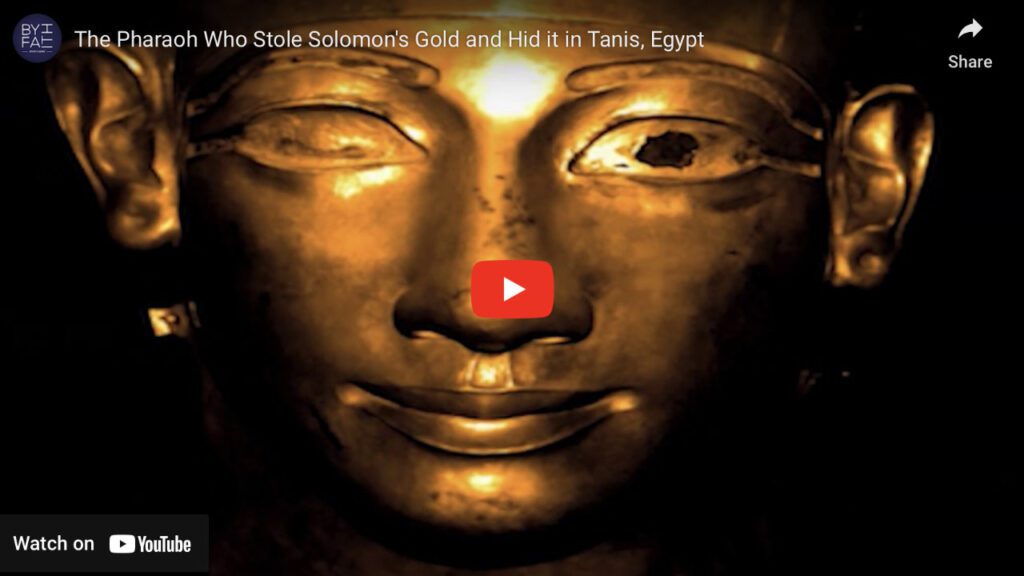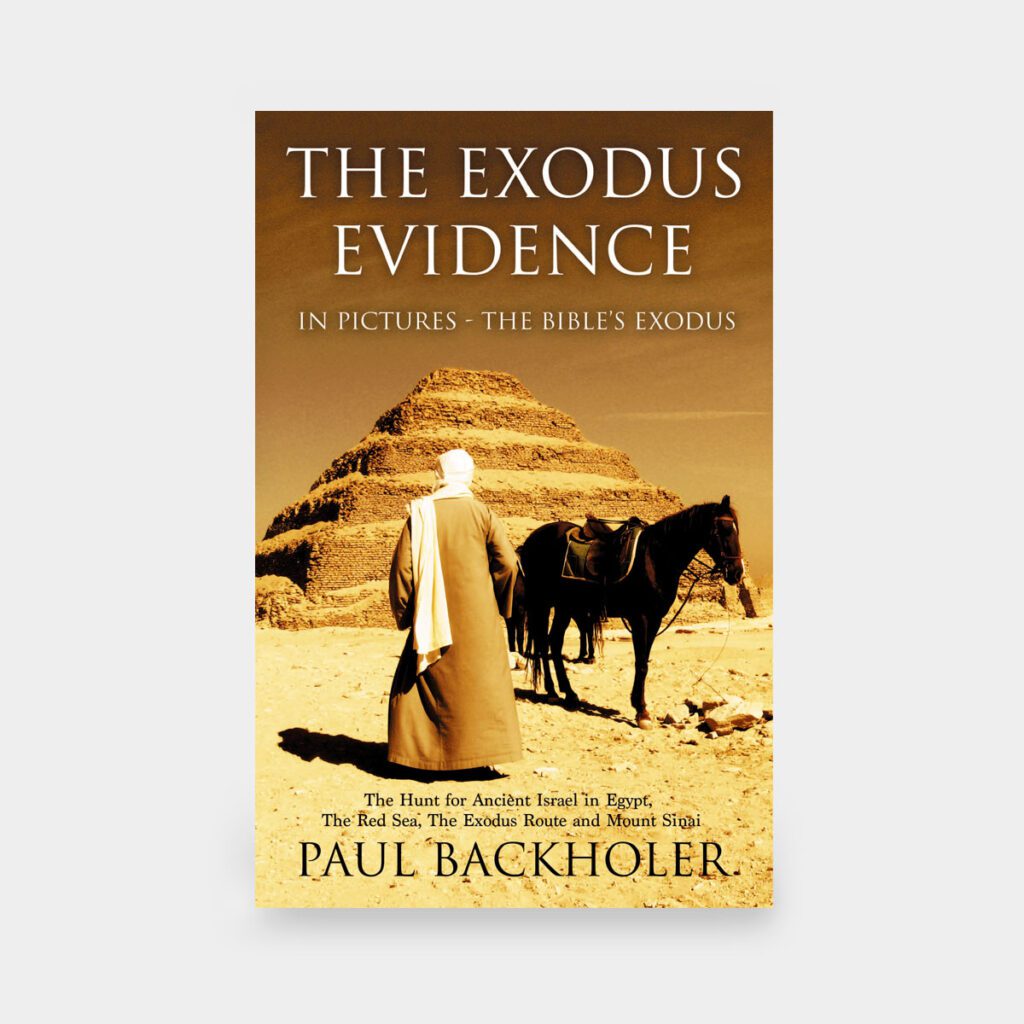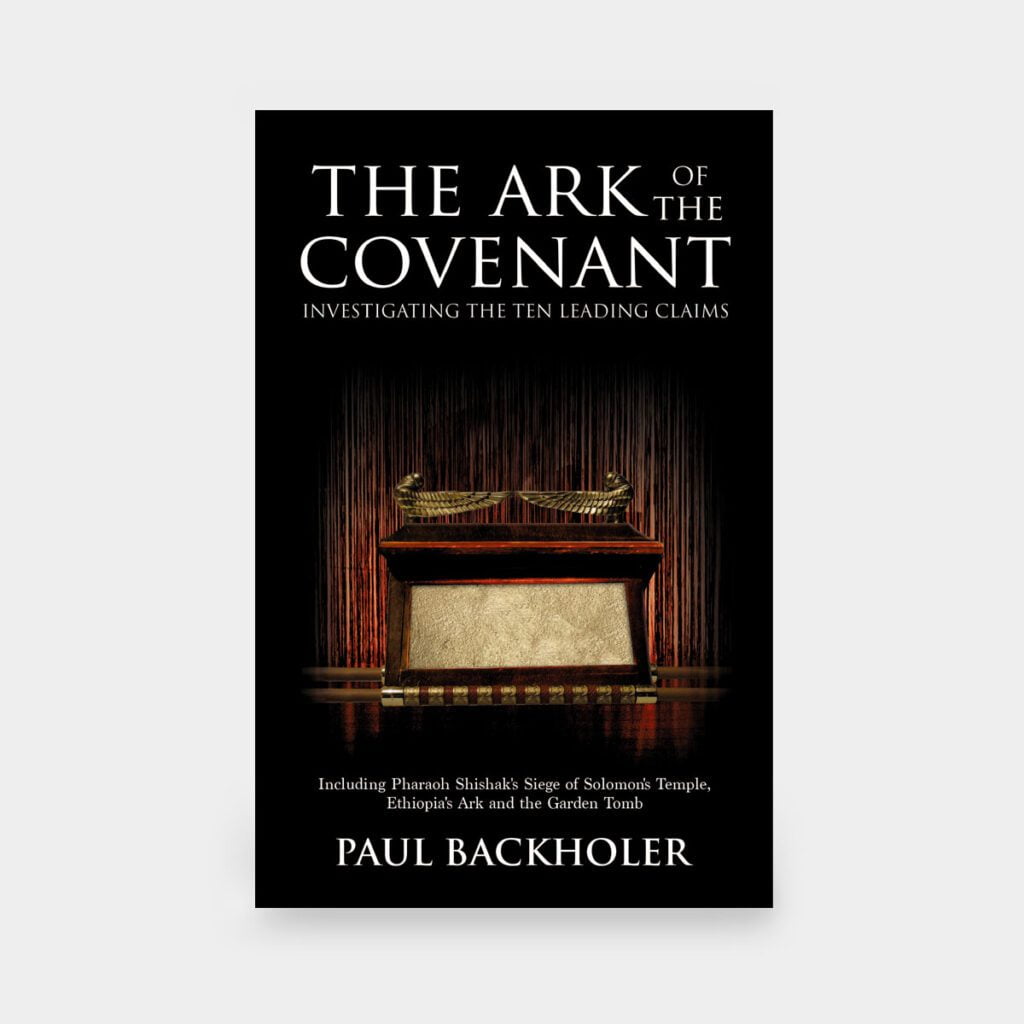
Solomon’s Wealth: The Gold & Silver of the First Temple – Where Is It Today?
Could it be possible to track down the gold and silver that came from Solomon’s Temple? Imagine witnessing the riches that once adorned Israel’s first Temple! This was a fascinating idea that drove our expedition into ancient Egypt’s lost cities.
They will be (Pharaoh Shishak’s) servants, that they may distinguish My service from the service of the kingdoms of the nations
– 2 Chronicles 12:8
As we drove through Egypt, we thought of the promise of this lost ancient world. When King Solomon reigned, the Bible indicates that Israel arrived at its greatest peak, with mountains of wealth and an empire. During the same time, Egypt was in a long period of decline, for the glory days of the New Kingdom were far behind and Egypt was struggling in their Third Intermediate Period. Plunder became more important to the weakened Egypt and the Bible states that the fame of Solomon’s wealth had spread throughout the world, 1 Kings 10, 2 Chronicles 12:9.
Between these two nations, the small and wealthy Israel and the inadequate Egypt entered Jeroboam. In his pride, Solomon had forsaken the Lord, and a prophet told Jeroboam that the nation of Israel would be divided and he would lead ten tribes. Upon hearing this Solomon sought to kill Jeroboam and he fled to Pharaoh Shishak in Egypt, 1 Kings 11:29-40.
No doubt the tidings of political instability in Israel were great news for Pharoah Shishak because there was a great deal of wealth in Jerusalem. Jewish experts who have studied the wealth of Israel during the age of David and Solomon have summarised that the Bible describes them as having many thousands of tons of gold and silver, 1 Kings 6-7, 1 Chronicles 28 and 29, 2 Chronicles 2-4.
When cynical scholars question the Bible’s account of this wealth, commentators call attention to Alexander the Great who took huge amounts of gold from ancient kingdoms in his campaigns.

After Solomon’s death, Jeroboam left Egypt and returned to Israel to present the case for a tax cut for the people, after the late king’s expensive building campaigns. The new king ignored the plea and alienated his people, causing the split of the Kingdom into Israel and Judah, 1 Kings 11:29-12:19.
This division fundamentally weakened the capacity of God’s people to defend themselves from any military threat. Meanwhile, the wealth of Israel was tantalising for any foreign power and Shishak’s war machine was soon entering the land.
Every pharaoh needed a successful military campaign to boost their support at home and plunder from foreign people would help to pacify Egypt’s troubles. Some scholars believe that Judah was so weak that they could not fight and they gave Shishak Solomon’s treasures to save the Temple. But where did he take their riches?
To find out we travelled to Tanis, the city where Shishak launched his attack on Judah and the place where his sons were buried. However, could archaeologists ever find any gold or silver here? Grave robbers are sometimes as infamous as the pharaohs, for they managed to search out and empty the royal tombs of their wealth. In fact, the situation was so bad that Egyptian priests eventually gathered and hid away the mummified bodies of their pharaohs in order to protect them.
Pharaoh Shishak’s tomb and the wealth within have never been found. No leads there then. Nevertheless in Tanis riches were uncovered second only to Tutankhamun’s; yet the discovery was never made famous for this excavation took place during WWII, when the world had bigger problems to think about and the finds were only published in French.
Tanis was the burial ground for the successors of the pharaoh who attacked Jerusalem and just fifty years after his death, Pharaoh Osorkon II came to power. We entered his tomb, with many others besides and we chanced upon a window into the ancient world.
The Bible declares that Shishak took the wealth of Jerusalem and Egyptians were always working on projects, including burial deposits which needed gold and silver. Therefore was any of Solomon’s treasure melted down and recast to be buried in these royal tombs? Many of the antiquities of Jerusalem were taken by Shishak and when archaeologists excavated these tombs, they identified golden treasures that the grave robbers had missed. Inside they dug up a bracelet bearing the name of Sheshonq I, the man who took Judah’s wealth and his relatives were buried with gold and silver. Sheshonq II had a golden face mask and a large silver coffin. When Solomon reigned he boasted of the abundance of silver in Jerusalem, but after his death, Egypt plundered the nation, 2 Chronicles 9:10-27.
Our next stop was at the Egyptian Museum the new home of these relics which were buried for over two and half millennia. In the Tanis exhibit, next to Tutankhamun’s display, we stood speechless gazing at the bracelet worn by the pharaoh who entered Jerusalem and took the wealth from Israel’s first Temple! How many Christians visit this museum without realising that the man who wore this bracelet saw Solomon’s Temple? Two steps away, we found the silver coffin and the golden facemask. These discoveries are almost unknown to the public and whilst experts cannot prove that these antiquities were made with Jerusalem’s wealth, the link remains provocative.
When we ask what happened to the wealth of Solomon’s Temple, the Bible gives us the answer. One of the culprits who stripped the Temple was Shishak, and plunder from his campaign would have been used to build his memorial in the Temple of Karnack, whilst some of Jerusalem’s gold and silver may have been recast, and buried in Tanis.

But did Shishak take the Ark of the Covenant? The Bible chronicles that he took many Temple articles, yet it suggests that other holy items must have been left, with the Ark itself being one such object, 2 Kings 24:13-14, 25:8-17. For the priests of Jerusalem the Ark of the Covenant and other sacred items were not pawns to be traded in for a short-term peace – the Ark was where God Himself dwelt, Leviticus 16:2, Numbers 7:89. Also, the Bible confirms that the Ark did not go with Shishak, for it records the Ark being in Jerusalem many centuries later, 2 Chronicles 35:3. Therefore Egypt’s Shishak did not gain possession of the Ark of the Covenant.
This article was adapted from the book Lost Treasures of the Bible by Paul Backholer and is used by permission.
By Paul Backholer. Find out about Paul’s books here.







